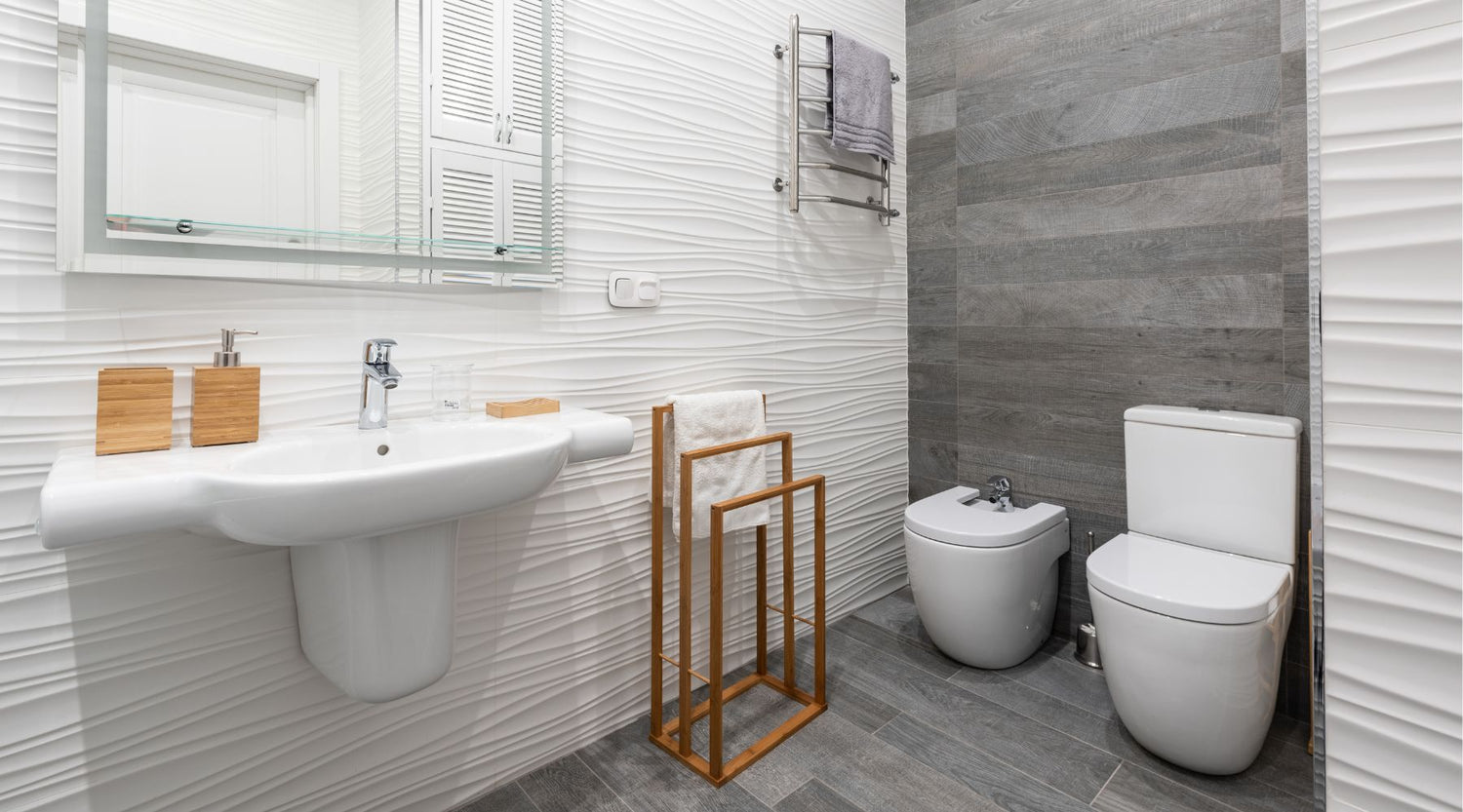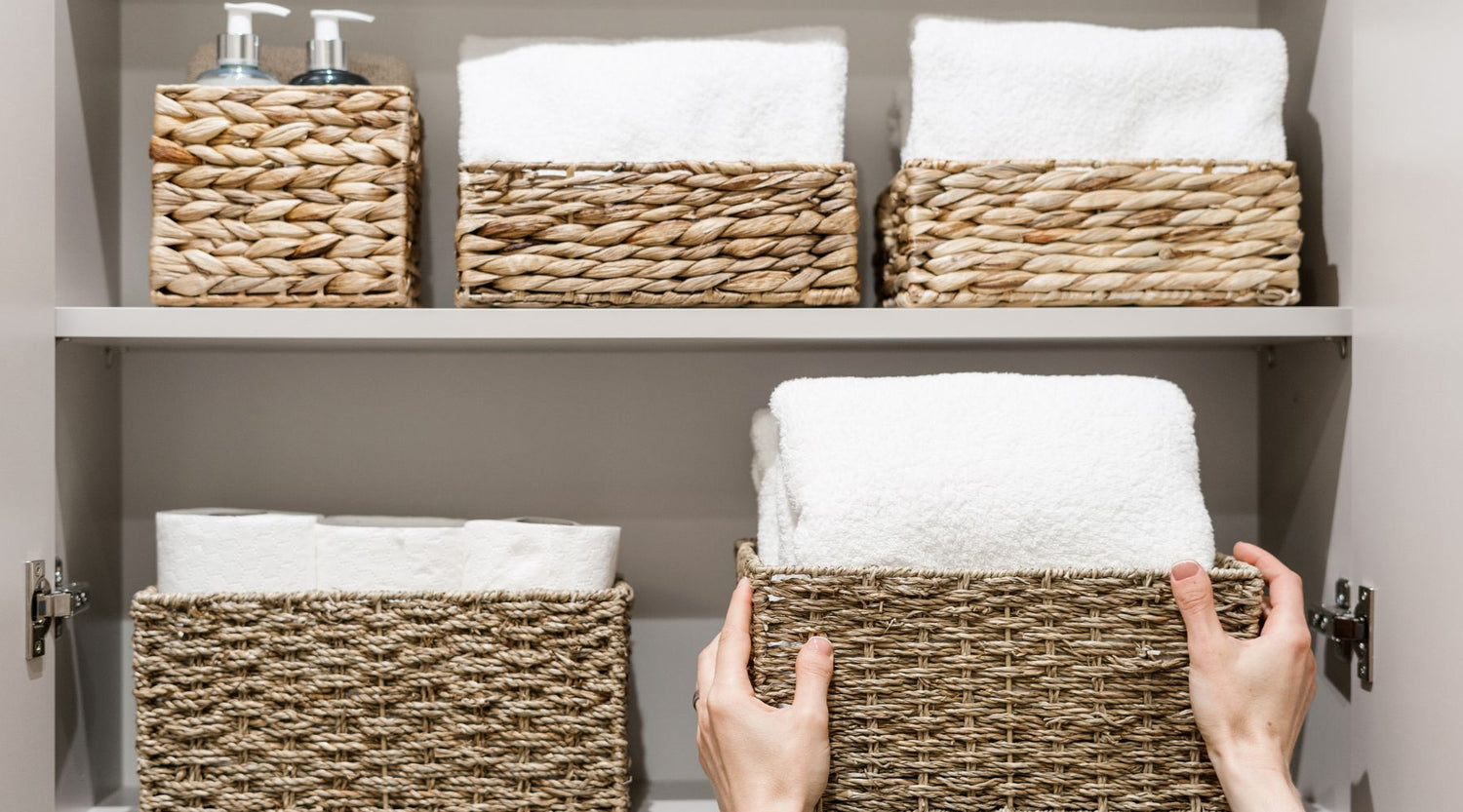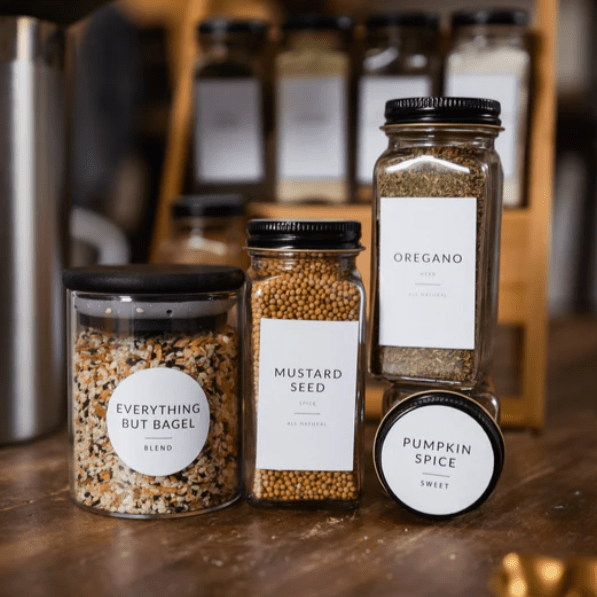Small pantries can prove to be much harder to organize than larger spaces With this being said, you can maximize storage with useful organizational strategies that help make the most out of your pantry space.
Here are some of our creative solutions that help turn a limited-capacity pantry into an organized space that is efficient and easy to use.
Quick links:
Take advantage of vertical space
Utilize behind-the-door storage
Use storage containers
Good organization in a pint-sized pantry may seem like an impossible task. Smart storage solutions help create order out of chaos. Use clear food storage containers, jars with labels, and matching canisters to get the organized pantry you’ve always wanted.
Follow these strategic organization tips to get the most out of your small pantry cabinet:
- Transfer snacks such as chips, pretzels, and crackers from their original packaging into uniform clear plastic bins with airtight lids. This streamlines accessibility maximizes valuable shelf space, and keeps snacks fresh. Use wide, shallow bins to corral bulkier items.
- Pour loose baking ingredients such as sugar, flour, etc. into labeled glass jars, and line them up neatly on shelves. This enables easy identification of contents while preventing spills.
- Store everyday pantry items such as tea, coffee, pasta, rice, and oatmeal in matching containers instead of their original cardboard boxes. This not only looks great, but also utilizes cabinet space efficiently, and makes items easy to use.
- Install extra deep drawers or slide-out trays to neatly arrange small jars of spices and condiments. This will help you take advantage of vertical storage space and avoid creating a jumbled mess on pantry shelves.

Our black bamboo spice jar is an ideal storage solution for your small pantry. With an 8.5 oz volume, hand-painted bamboo lid, and silicone ring for an airtight seal, your precious spices will stay fresh and organized.
Take advantage of vertical space
Don't let your small pantry's limited space prevent smart, efficient organization. Make the most of the space you have by taking advantage of vertical space maximizing storage.
Here are some quick tips:
- Install extra shelves and racks that are either wall-mounted or freestanding to boost capacity. Sturdy, adjustable options work well.
- Use wall-mounted spice racks, pan lid racks, narrow wall-mounted shelving, hanging utensil racks, or hanging bins for lightweight items. These are a great way to make use of vertical space.
- Stack containers, canisters, and basket drawers vertically to optimize shelf space. Label the front of each drawer or bin to easily identify contents.
- Use tiered shelf organizers, vertical dividers, or hanging racks to neatly store cutting boards, baking pans, and other flat items on their sides to maximize space.
- Mount a paper towel holder and laundry detergent caddy inside cabinet doors to free up precious shelf space.
With compact yet functional organizers, your pint-sized pantry can offer more storage.
Incorporate sliding shelves
Pull-out sliding shelves are a great way to maximize every inch of your small pantry. Unlike stationary shelving, sliding shelves bring items from the back of deep cupboards right to your fingertips. These clever organizers make the most of otherwise hard-to-access pantry space.
Pull-out sliding shelves will instantly increase storage space. Sliding shelves and other pull-out storage systems allow you to see all of your items without rummaging around in hard-to-reach corners. Store everything from bags of pasta, rice, and chocolate chips to granola bars conveniently within reach.
Pull-out sliding shelves and drawers are excellent for organizing bulk pantry items and awkwardly shaped packages that usually get tossed onto shelves haphazardly. Custom-fitted for your existing cabinetry, they combine storage and accessibility. Eliminate wasted shelf space and food waste by installing sliding shelves.
Utilize behind-the-door storage

Just because your small pantry has limited shelf space doesn't mean you can't find ways to maximize storage. Clever behind-the-door organizers allow you to take advantage of the often overlooked wall space found on the backside of pantry doors.
Install storage racks, mesh holders, and hanging bins on the inside of pantry doors to effectively use this dead space. Door-mounted storage is perfect for kitchen essentials like cutting boards, baking sheets, foil, plastic wrap, and extra paper towels. Mount a vertical organizer for spices, another for snacks, and one more for canned goods to make use of vertical wall space.
For even more behind-door storage, replace your existing pantry door with a storage cabinet door. This turns the back of the door into valuable real estate outfitted with shelves, drawers, and other custom storage options for dry foods, snack bars, and more. It can also be a perfect place to put a chalkboard where you can write your grocery lists.
Incorporate lazy Susans
Lazy Susans are the ultimate space-saving solution, especially for small pantries. These rotating trays allow you to store and access items packed into tight corners.
- Install a large lazy Susan in a deep corner to efficiently organize bulk snacks, cereal boxes, and other food items. Spin it to easily see and grab what you need without unpacking everything and wasting valuable time.
- Use a two-tiered lazy Susan to double the storage capacity of a single shelf. Ensure that your baking supplies or canned goods are as accessible as possible.
- Stack small, multi-level lazy Susan spice racks to hold seasoning jars, condiments, and sauces. Spinning trays save you from rifling through a crowded shelf to find what you need.
- Attach a vertical lazy Susan inside the upper cabinets or the lower corners of a pantry for peripheral item storage. Rotating bins, carousels, and trays provide organized access to lesser-used items.
Lazy Susans are magic for a small pantry. With these easy-to-use turntables, every inch of storage space is used so your pint-sized pantry stays neatly organized.
Create zones
Divide your petite pantry into organized sections for different types of food and ingredients. Assign shelves, bins, or entire sections specifically for baking needs, snacks, canned goods, etc.
Categorize zones with a labeling system. For example, apply removable vinyl labels directly onto shelves, containers, and drawers to identify each zone. For a uniform look, print labels with zone titles to make them easy to identify. Consider a color coding system— blue for snacks, green for produce, red for baking. Match containers and bins to zone colors.
You can also use chalkboard labels. Our set of 96 chalkboard labels includes a label marker so you can create easy-to-read labels. They are removable and reusable, and come in various shapes and sizes—amazing for creating nicely organized zones in your pantry space or kitchen cabinets.
You can also use our preprinted labels for a more durable, long-lasting option. Use clear titles such as “baking,” “canned goods,” and “chips and snacks.”
Dedicate the most accessible shelves to everyday items and favorite snacks. Reserve upper cabinets for lesser-used goods and bulky packages. You can also install pull-out drawers in different zones for baking essentials, dry goods, and more.
A labeled zone system also helps to streamline restocking after grocery trips. Items can be placed directly in their designated place instead of searching for the right spot and burning time. With an intentional, well-organized system, your pint-sized pantry will function effectively.
Small pantry organization ideas FAQ
How do I maximize my small pantry space?
To maximize a small pantry space, install pull-out drawers, shelf risers, and organizers to fully utilize the vertical space. Also, label shelves and storage bins clearly so items can be found easily.
Use storage items such as stacking bins and hangers for cooking utensils to save some space.
How do I maximize my corner pantry space?
There are several clever storage ideas to maximize corner pantry space. Install wire shelving or wooden corner shelves that are made specifically to fit right angles. These deep shelves make use of otherwise wasted space. Use vertical dividers for narrow items like baking sheets. Lazy Susans also save space in corner pantries.
Additionally, use wall space with command hooks for utensils. Consider using shelves on the inside of cabinet doors for small items like spice packets.
How do you organize a small pantry cupboard?
To organize a small pantry cupboard, use shelf risers, storage bins, and baskets to corral items. Label shelves and bins for easy locating. Install extra shelves or pull-out drawers to increase usable space.
You can also use door racks, vertical organizers, and wall hooks for smaller items. Have snacks and everyday items within reach to prevent constant rummaging.
What do you put on the floor of your pantry?
Store infrequently used appliances like mixers and blenders or large bags of rice, flour, sugar, etc. on the floor of your pantry. This valuable space is great for oversized containers, bulky appliances, large packages, and overstock. Use this blank space for pet food, paper products, cleaning supplies, or bottled beverages.
Place a protective mat under heavier items to avoid damaging floors. Avoid putting everyday items you use often on the floor of your pantry.
What are the best shelves for a pantry?
The best shelves for pantries are adjustable wire shelving, wooden shelves, or solid pull-out drawers. Adjustability accommodates various item sizes, while the openness of wire shelves allows visibility of stored goods. Wooden shelves give a built-in look and pull-out drawers efficiently use space. For depth, wall-mounted wooden shelves with raised edges prevent items from rolling off.
How do you lay out a walk-in pantry?
When laying out a walk-in pantry, designate zones for different categories of items. Place everyday cooking ingredients, such as oils and spices, closest to the kitchen entry on easy grab shelves.
Put appliances like stand mixers on the floor or counter space beneath shelves. Assign one area for bulk ingredient storage with wide pantry shelving. Another for snack baskets and glass jars.
Install floor-to-ceiling shelving on all usable wall space, incorporating pull-out cabinets and drawers where possible.
How can I organize my pantry on a budget?
To organize your pantry on a budget, arrange similar ingredients into groups. Use inexpensive storage options such as crates, baskets, and bins for easy access. Consider using masking tape to make all of your labels to cut costs.
For dry goods or spices, separate servings into reusable containers with clear labels. Double up space with shelf risers, or install wall-mounted rails to hang utensils.
Repurposing used containers saves money while keeping foods sealed to avoid unnecessary food waste.





